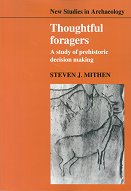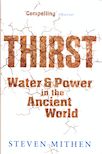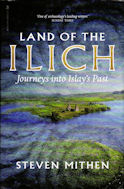To the Islands is the personal memoir of archaeologist Steven Mithen’s
twenty-five-year quest to uncover the world of Mesolithic hunter-gatherers
in the Hebridean islands – and his defence of archaeology as a lifelong passion.
Providing a unique insight into the world of archaeology, To the Islands recounts
in fascinating detail the ongoing research Mithen has undertaken
to reconstruct the lifestyles of Mesolithic hunter-gatherers
who lived in the Hebrides around 7000BC – before the appearance of Neolithic farming communities.
Mithen takes the reader on an epic journey which begins with the development of research plans
that lead to the discovery of Mesolithic sites, and follows their subsequent excavations.
It ends with a visit to the Small Isles, where the author reflects on what he bas achieved
during more than two decades of research in the Hebrides,
and on the adventure still to come.
Mithen’s engaging, fluent and effortlessly erudite style keeps the book firmly sccessibe
to the general reader of popular science, archaeology and history.










